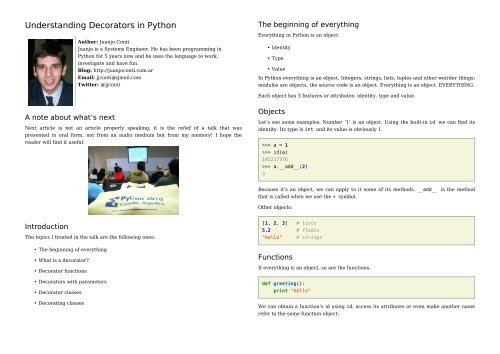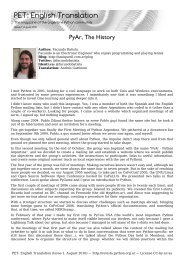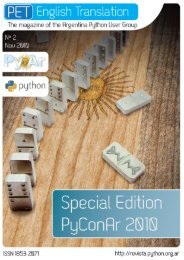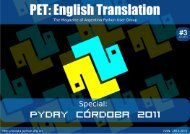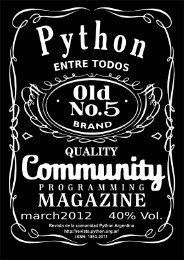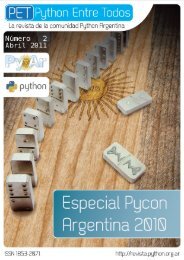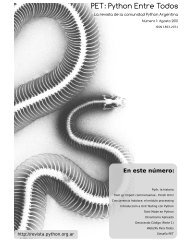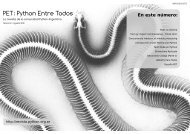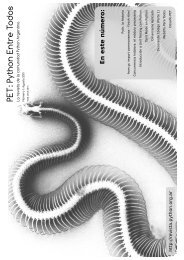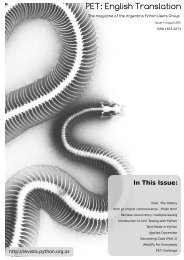color version - PET: Python Entre Todos - Python Argentina
color version - PET: Python Entre Todos - Python Argentina
color version - PET: Python Entre Todos - Python Argentina
Create successful ePaper yourself
Turn your PDF publications into a flip-book with our unique Google optimized e-Paper software.
Understanding Decorators in <strong>Python</strong><br />
Author: Juanjo Conti<br />
Juanjo is a Systems Engineer. He has been programming in<br />
<strong>Python</strong> for 5 years now and he uses the language to work,<br />
investigate and have fun.<br />
Blog: http://juanjoconti.com.ar<br />
Email: jjconti@gmail.com<br />
Twitter: @jjconti<br />
The beginning of everything<br />
Everything in <strong>Python</strong> is an object<br />
• Identity<br />
• Type<br />
• Value<br />
In <strong>Python</strong> everything is an object. Integers, strings, lists, tuples and other weirder things:<br />
modules are objects, the source code is an object. Everything is an object. EVERYTHING.<br />
Each object has 3 features or attributes: identity, type and value.<br />
A note about what’s next<br />
Next article is not an article properly speaking, it is the relief of a talk that was<br />
presented in oral form, not from an audio medium but from my memory! I hope the<br />
reader will find it useful.<br />
Objects<br />
Let’s see some examples. Number ‘1’ is an object. Using the built-in id we can find its<br />
identity. Its type is int and its value is obviously 1.<br />
>>> a = 1<br />
>>> id(a)<br />
145217376<br />
>>> a.__add__(2)<br />
3<br />
Because it’s an object, we can apply to it some of its methods. __add__ is the method<br />
that is called when we use the + symbol.<br />
Other objects:<br />
Introduction<br />
The topics I treated in the talk are the following ones:<br />
• The beginning of everything<br />
• What is a decorator<br />
• Decorator functions<br />
• Decorators with parameters<br />
• Decorator classes<br />
• Decorating classes<br />
[1, 2, 3] # lists<br />
5.2 # floats<br />
"hello" # strings<br />
Functions<br />
If everything is an object, so are the functions.<br />
def greeting():<br />
print "hello"<br />
We can obtain a function’s id using id, access its attributes or even make another name<br />
refer to the same function object:


